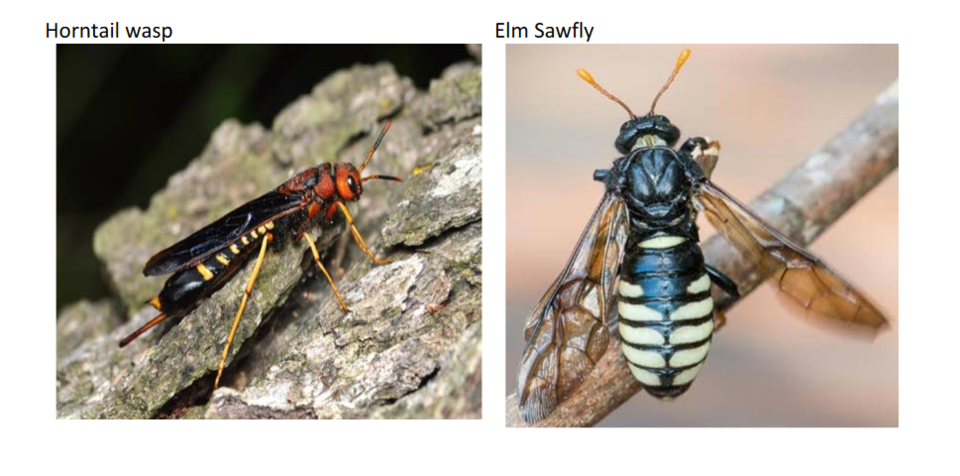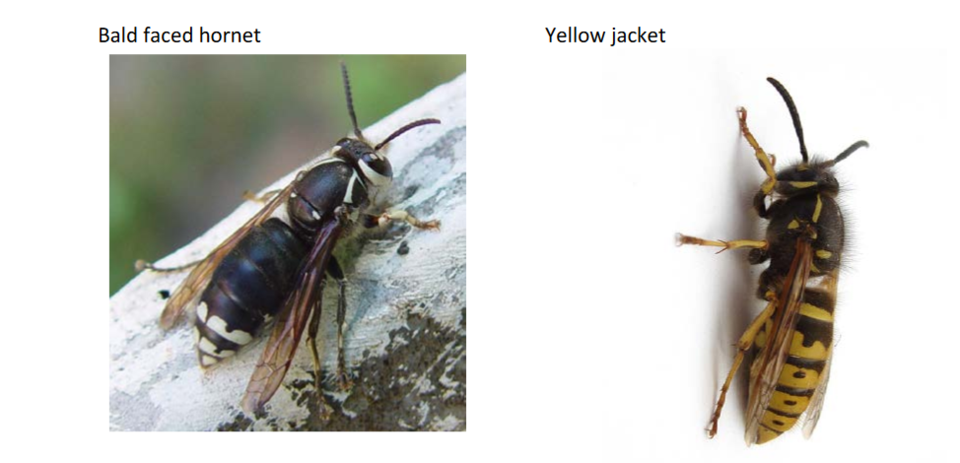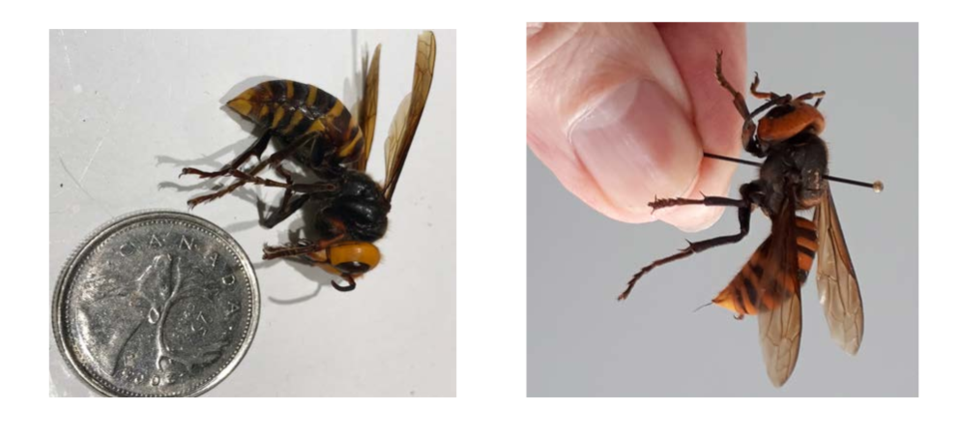Last May a North Vancouver man discovered an unusually large hornet at his Vancouver-based office and suspecting it wasn’t a native species, trapped it in a plastic container while he did some detective work.
As reported at the time, it was never confirmed 100 per cent, but the man spoke with several experts who strongly suggested the oversized insect could be an Asian giant hornet.
But, the first official sighting of the Asian giant hornet B.C. was last August in Nanaimo and a single nest was located and destroyed.
Then last November a single giant hornet was found in White Rock, while in December, two more were discovered near Blaine, WA.
According to a press release from the provincial Ministry of Agriculture, these findings indicate a probability that nesting hornets are overwintering in the area near Zero Avenue, a road that runs between Surrey and Aldergrove.
Wooded habitat, like areas near the Canada/U.S. border, offer suitable hornet nesting grounds so the province is asking residents along Zero Avenue to report any sightings of “Vespa Mandarinia” that may emerge from their nests in the coming weeks and months.

In response, provincial apiculturist are going to place specialized traps in the area and distribute pest-alert notices to Zero Avenue residents in the coming weeks, along with information and photos of the Asian giant hornet and the steps to take if you spot the insect.
Asian giant hornets are large compared to other species, with noticeably bigger orange heads and black eyes. Worker hornets are approximately 3.5 centimetres in length, while queens can be up to four to five centimetres with a wingspan of four to seven.
The Asian giant hornet is classified as a serious honeybee predator –- they hunt insects for food and generally are not interested in humans, pets and livestock. Though, when their nest is disturbed, they will attack with painful stings, which can be hazardous to a person's health.
British Columbians who think they may have spotted an Asian giant hornet can report their findings to the Invasive Species Council of B.C. at 1-888-933-3722, via the council's "Report Invasives" mobile phone app or online.
What you need to know
Asian giant hornets only nest in the ground, unlike other species of wasps or bees that build nests and hives in trees or buildings.
Asian Hornets are not interested in humans, pets and large animals. They hunt insects for food. The only time hornets will attack is when their nest is disturbed.
Asian Hornets will feed on honeybees and are capable of destroying hives in a short time period. Hornets are dormant and unlikely to be seen in fall and winter

Look-alike species
There are several large insects native to B.C., which are commonly mistaken for Asian hornets. There is no need to report those.
If you're stung
As with wasp or bee stings, place an ice cube or pack or cold compress on the spot to reduce inflammation and the spread of venom.
Don’t rub the site, it will cause the venom to spread into the surrounding tissue.
If you are stung multiple times or have symptoms of toxic or allergic reaction, seek medical attention immediately.
Biology
The giant hornet feeds on honeybees and other large insects. It establishes ground nests and forages as far as eight kilometres from its nest.
Similar to endemic wasps, including bald-faced hornets and yellowjackets, the giant hornet establishes annual nests in the spring.
During summer it expands until August when virgin queens will emerge. After mating, the young queens will disperse and winter on their own and the original nest dies in the fall.
This hornet is widely distributed in East Asia from the sub-tropics of South China to the temperate zones of the Korean peninsula and northern Japan.
@sthomas10



